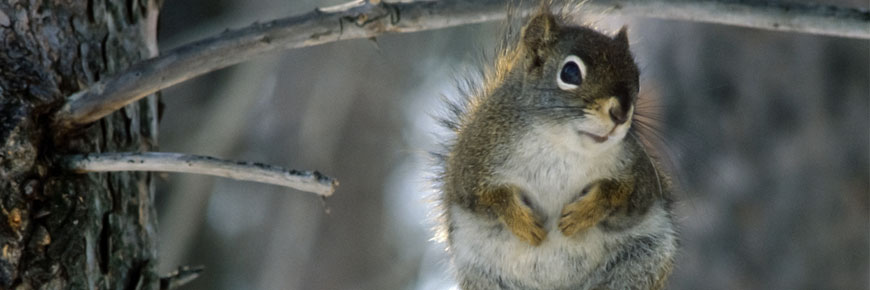
Sick, dead or injured animals at the Carillon Canal
Carillon Canal National Historic Site
During your visit, you may find a sick, dead or injured animal. It is important to recognize the signs and follow these safety guidelines to minimize the animal's stress and avoid the spread of diseases that can be transmitted to pets and humans.
Signs of sick or injured animals
- Wound, bleeding or obvious injury
- Difficulty breathing or noisy breathing
- Runny eyes or nostrils, stuck eyelids
- Difficulty moving around, standing up or holding their head up
- Marked lethargy or depression
- Soiled fur or feathers around the anus
- Areas of skin without hair or feathers
- Birds unable to fly, with a hanging wing
Safety instructions to follow when you find an injured or sick wild animal
- Avoid approaching or handling injured or sick wildlife
- Keep pets away at all times
- Avoid staying close to the animal
- Never attempt to intervene with an animal that could bite or injure you
What you should do if you come into contact with an injured, sick or dead wild animal
If you or a pet have been bitten, scratched or come in contact with the saliva of a wild animal, whether apparently healthy, sick, injured or dead, you must:- Clean the wound, even if it is minor, with soap and water for at least 10 minutes
- Quickly contact Info-Santé at 8-1-1 in order to obtain an adequate medical follow-up
- If a pet has been in contact with or bitten by a wild animal, consult a veterinarian promptly to assess the risk of transmission of certain diseases and to learn what measures to take with your pet
What you should do if you find a dead animal
Contact us at 514-283-6054
If possible, letting nature take its course may be the best option. Indeed, the death of wildlife is an integral part of healthy ecosystems and the survival of some animals depends on the death of others. Thus, a sick, wounded or dead animal will serve as a meal for a predator that can use it to feed its own young and allow them to survive.
Related links
- Date modified :